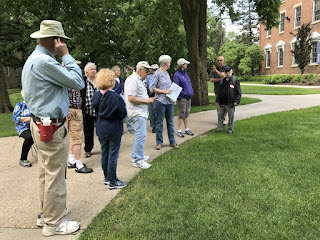The CAS Annual Holiday Luncheon Features Gala Changes
C AS members can look forward to several pleasant changes and a few surprise when they gather at 2:00 pm for the Annual Holiday Luncheon, December 3rd, at the Evanston Public Library,1703 Orrington Av.First and foremost the luncheon is free, a holiday gift from the CAS for paid members in good standing who reserve a chair at the groaning board!
(Elsewhere in the Codex is the requisite reservation form for the luncheon). Because the luncheon is free and because it will be catered, it is important to have a reservation count.
There will be a very special prize gift drawing of an eth-no/art treasure from the Doris Neilson legacy. Doris, a retired teacher and world traveler, created a small personal museum ln her Michigan home that was closed when she moved from Michigan to the east coast. Doris (made personal gifts of the museum contents to Michigan State University and to the Chicago Archaeological Society. Many of her Michigan State gifts are presently on display at Michigan State and a lucky December reveler will win an item from the legacy. A similar legacy was bequeathed by CAS President Frank Underbrink.
Whether it’s the Maya of Central America or the Moche (or the Incas!) of Peru across the vast expanse of the New World the precious heritage of the past is threatened with damage and destruction.
Much of the threat has been threatened by the nature of time e.g. El Niño, but much of the destruction has transpired by the hand of humans.
Grim Rituals of the Moche
Recent excavations at the Peruvian Pyramid of the Moon and the urban area between the two platforms have exposed Moche specialistswith new information about ritual and everyday lives of the Moche.
Until now understanding was drawn from gruesome artwork, primarily depicted on ceramics. Vessels in the form of molded figures
and intricate fine-line painting show warrior-priests bedecked in imposing ornate garb orchestrating ritual warfare; slitting captives'
throats, drinking their blood.
In the absence of archaeological evidence, most scholars accepted many of the scenes found on late Moche ceramics too horrific to take literally, often suggesting they were simply artistic hyperbole, imagery the priestly class used to underscore its coercive power.
Now, however, ongoing archaeological exploration has revealed the truth that Moche art was representative of the ancient Moche life it so horribly displayed!
Please mark your calendar to save December 3rd to learn more about the Moche and remember your holiday luncheon admission and reservation is free but you are requested to return your reservation form.

































